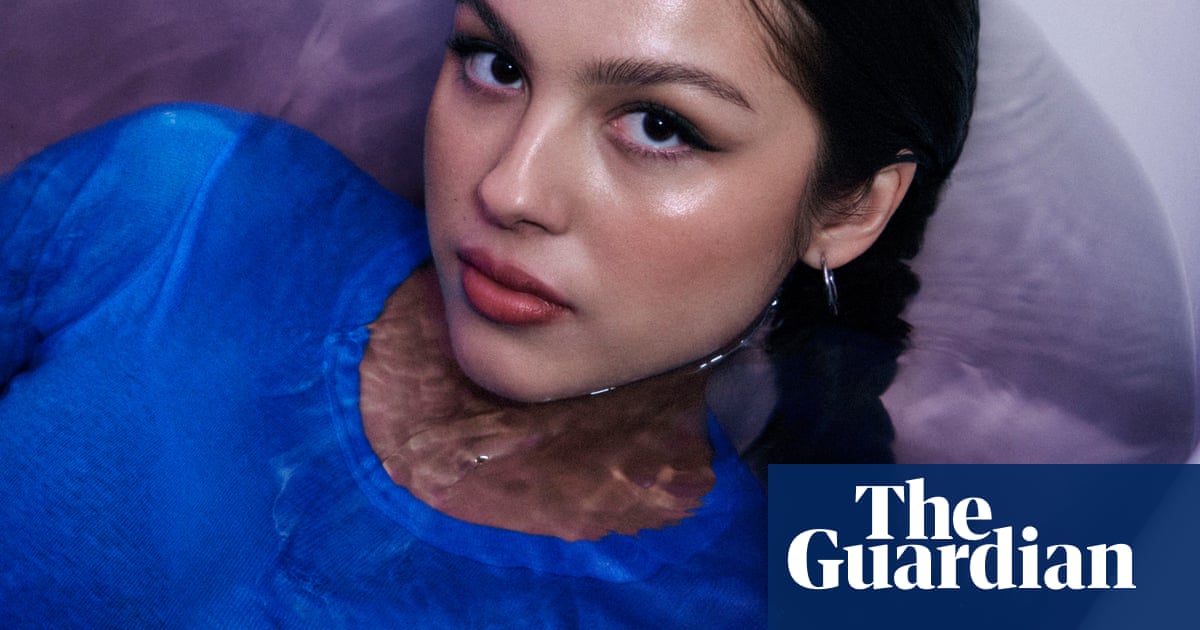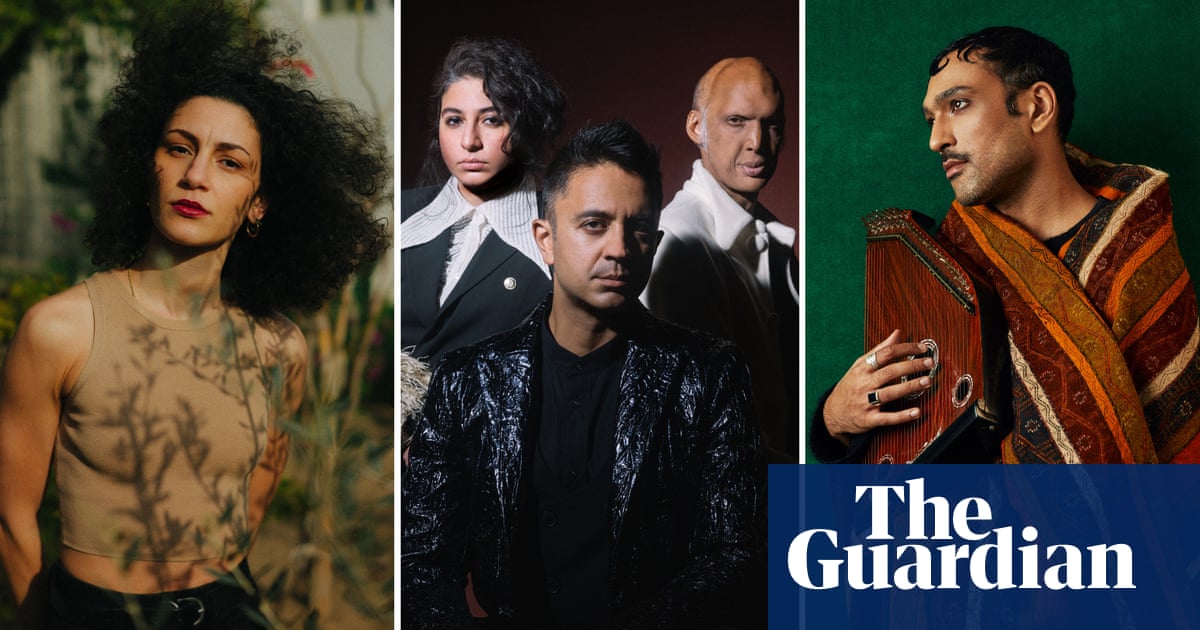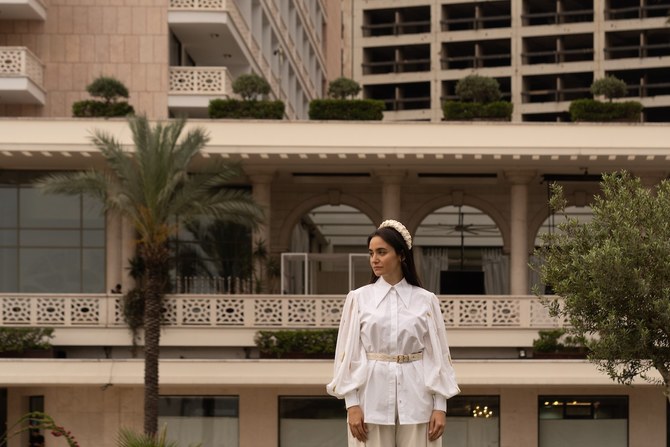
10. Nikki Iles – Face to Face
Since the 1990s, the pianist and composer Nikki Iles has been a sought-after accompanist with a flawless anticipatory ear, a harmonically innovative composer and a piano improviser in the classic keyboard traditions of Bill Evans, John Taylor and Paul Bley. Face to Face joins her to Hamburg’s illustrious NDR Bigband, and a crop of terrific soloists including UK saxophonist Nigel Hitchcock and exhilarating guitarist Mike Walker. The exuberantly staccato and then blithely swinging Misfits, the smouldering Wild Oak and Iles’s Ivor Novello award-winning lockdown composition The Caged Bird are highlights of a fine and overdue set by a national jazz treasure.
9. John Scofield – Uncle John’s Band
The title may have a nostalgic ring, but John Scofield, 71, isn’t easing into armchair reminiscences on this terrific double album. In fact the title refers to a 1970 Grateful Dead tune – but Uncle John’s Band is a sharp, here-and-now reinvention of classic pop, alongside hard-swinging originals chiming with Scofield’s blues-boppish sound. Adding former Robert Glasper bassist Vicente Archer to his band with longtime drums partner Bill Stewart has sharpened Scofield’s small-group drive, as confirmed by a harmonically audacious Mr Tambourine Man, Birth of the Cool’s sidelong Budo and several nimble, bass-walking originals infused with his laconic lyricism.
8. Sissoko/Segal/Parisien/Peirani – Les Égarés
“Les Égarés” means “those who stray”, which aptly describes the creative collusion of the four very different performers here: idiosyncratic jazz-rooted French soprano-sax maestro Émile Parisien, Malian kora maverick Ballaké Sissoko, improvising cellist Vincent Segal and accordion virtuoso Vincent Peirani. Joe Zawinul’s Orient Express is the most explicit jazz reference, a captivating accordion chord-vamp for Parisien to coax and whisper in. His bridging of the early-to-modern worlds of Sidney Bechet and Ornette Coleman mixes with lyrical kora hooks, nimble accordion post-bop and haunting cello harmonies throughout this surprising, culture-hopping set.
7. Angelika Niescier/Tomeka Reid/Savannah Harris – Beyond Dragons
The impact of predominantly African American breakouts in post-bebop improv techniques began in the late 50s and early 60s with the music of Ornette Coleman, John Coltrane, Cecil Taylor and others, but soon found its way to Europe and creative originals including Peter Brötzmann and Misha Mengelberg. Prize-winning Polish-born German alto and soprano saxophonist Angelika Niescier belongs to the younger European generation set loose by those inspirations. She joins the formidable cello-and-drums pairing of Tomeka Reid and Savannah Harris here, travelling intricately twisting, sometimes Anthony Braxton-like melodic labyrinths, delicately drifting tone-poems and thrilling ascents to percussive eruptions. Read the full review
6. Naïssam Jalal – Healing Rituals
The French-Syrian flautist, vocalist, improviser and composer Naïssam Jalal created one of the year’s standout mixes of Arabic, African, classical and jazz-improv woodwind techniques with Healing Rituals. It was a venture born of personal crisis: she was hospitalised when she imagined these salutations to the natural world that she believes steered her back to health. Its cross-genre openness is evident in her phrasing, rhythmic sense and interactions with improvisers. Jalal is attentively accompanied here on cello, bass and percussion, and the cinematic pieces feature twisting evocations of capricious winds or murmuring, hand-drum-coaxed water over rocks, birdsong in forests, percussively conjured storms. Read the full review
5. Uriel Herman – Different Eyes
Jazz sceptics sometimes complain that the genre values technique over soul, but young Israeli pianist Uriel Herman’s Different Eyes proved an especially heartfelt rebuttal. His lingeringly haunting personal journey united the songs and sounds of his Jerusalem childhood with the musics of the wider Middle East, alongside American-songbook and Latin-jazz classics, Chopin glimpses and jazz-pop reinventions. Highlights include a tender Herman lullaby; a solo account of Antonio Carlos Jobim’s Luiza that is sometimes reflective, sometimes vehement; and Nirvana’s Polly, which veers from a dreamscape to a folk dance. The pianist’s powerful sextet is right on his wavelength.
4. Gretchen Parlato and Lionel Loueke – Lean In
The long rapport between the American vocalist Gretchen Parlato and the Benin-born guitarist/singer (and frequent Herbie Hancock sidekick) Lionel Loueke is revisited on Lean In – a sublime liaison accurately captured in Parlato’s claim that performing with Loueke is like working with someone “who finishes your musical sentences”. Half the tracks are duets while the rest feature bass, drums (Parlato’s percussion-star counterpoint, the energising Mark Guiliana) and backing vocals. Classic Brazilian samba echoes, west African grooves, Loueke’s joyously Benin-evoking Akwê and a bold makeover of Foo Fighters’ Walking After You all meet on a quirky, startling tracklist. Read the full review
3. Michael Blake/Chroma Nova – Dance of the Mystic Bliss
Dance of the Mystic Bliss might sound gentle, but there is some muscular music on this fine set by the gifted Canadian saxophonist and composer Michael Blake – an artist famous for his avant-rock association with John Lurie’s Lounge Lizards, which perhaps has something to do with his undeserved marginalisation from the jazz mainstream. Fronting a dynamic Brazilian guitar/percussion trio plus cello, bass, and New York folk/psychedelia violinist Skye Steele here, Blake mixes Ornettish themes triggering free-jazz hoedowns, funky guitar hooks turning to hi-life or bluesy chord-crunchers and almost Duke Ellington-harmonised slow-burners. Read the full review
2. Marius Neset/London Sinfonietta – Geyser: Live at Royal Albert Hall
When Marius Neset first emerged in about 2010 as a student of Django Bates at Copenhagen’s Rhythmic Music Conservatory, pundits predicted a rising sax star with the headlong power of Michael Brecker and the tonal subtlety of Jan Garbarek. But the voracious Neset dug deep into contemporary-classical composing, too, as his remarkable eight-year liaison with the UK’s London Sinfonietta confirms. This Royal Albert Hall show frames his exultant improv excursions within glacial strings sounds and quivering woodwinds, unleashes call-and-response exchanges with vibraphonist Jim Hart and pianist Ivo Neame, and sets the Sinfonietta jazz-rhythm challenges to which it rises spectacularly.
1. Tyshawn Sorey – Continuing (Pi Recordings)
Tyshawn Sorey, the multi-prizewinning and prolific African American composer/improviser and drums virtuoso, has been racing through the hurdles of his unique 21st-century musical evolution since he won the US’s exalted MacArthur fellowship in 2017 – even pandemic shutdowns didn’t halt his output of livestreamed improv and new contemporary-classical works. Continuing, a superb acoustic-trio set with pianist Aaron Diehl and bassist Matt Brewer, brilliantly covered classic originals by Wayne Shorter, Ahmad Jamal and others with a stripped-down eloquence that rewrites the jazz book on standard-song interpretation. Read the full review












